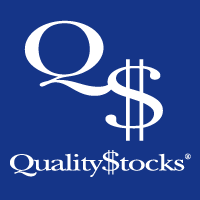GTX Corp. (GTXO) SmartSole Poised To Carve Off Sub
Post# of 271

The global wearable technology market, worth only $750 million back in 2012, has maintained its show stopping growth pattern this year, spurred on by the planet’s biggest tech companies continuing to vie for the pole position in an ongoing race to become the dominant developer of what is seen as essentially the next mobile phone market. Transparency Market Research recently projected a forward CAGR of over 40 percent through 2018 for the space and leading tech-focused market research, analysis and advisory firm, International Data Corporation, estimates that more than 72 million units will ship by this year’s close, a whopping 173 percent jump over last year’s figure, and this figure is seen by IDC as growing to over 155 million units by 2019, on a CAGR of 42.6 percent.
One of the companies pushing the hardest is Intel (NASDAQ: INTC), which bought up Canadian high-tech sports eyewear maker Recon earlier this year. Intel even announced at its recent developer’s forum that the latest iteration of its America’s Greatest Makers contest will have its own long format reality TV show starting early next year.
The world’s biggest chip maker pumping the public for ideas clearly shows how aggressive the wearables game has become and even NASA is now leaning on the public in this way, running a contest to develop a smartwatch app for astronauts on the ISS using the Samsung (OTC: SSNLF) Gear 2 as a reference device for designs. This after units of Microsoft’s (NASDAQ: MSFT) augmented reality headset, HoloLens, never made it to the ISS, as they were lost earlier this year during the failed CRS-7 Falcon 9 resupply mission by Tesla (NASDAQ: TSLA) founder Elon Musk’s SpaceX.
According to emerging technology-focused independent market research and business intelligence firm IDTechEx, one of the big trends in wearables is the continuing efflorescence of advanced informatics as wearable electronics. This trend will naturally expand the footprint of wearables in the healthcare market considerably, with truly disruptive implementations in areas such as e-textiles promising billion dollar sales potential, especially for devices that capture the right mix of data capture, communication, and overall functionality. We are already seeing some of the first truly compelling fruits of this race, with companies like Philips (NYSE: PHG) Healthcare teaming up with Google (NASDAQ: GOOG; GOOGL) to merge Philips IntelliVue Solutions technologies with Google Glass, transferring real-time data directly to the eyepiece so that doctors can have a persistent HUD (heads-up display) feeding them patient vital signs, all without ever having to take their eyes off the procedure.
Philips, which developed the IntelliVue MX40 wearable patient monitor that can display real-time patient vital signs on its color touchscreen and yet is light and small enough for ambulatory patients to comfortably wear, has also teamed up with Accenture (NYSE: ACN) in order to fuse together big data and wearable tech in a solution targeted primarily at ALS patients. The proof of concept solution from Philips and Accenture ties together a wearable display with the Emotiv Insight Brainware, a 5-channel wireless headset that records brainwaves, resulting in a device that could provide a great deal of independence to ALS sufferers, as well as others with neurodegenerative diseases. There is a great deal of potential for real-time patient monitoring devices like this and the success of systems like the LifeWatch, a mobile phone connected remote cardiac monitoring wearable from the subsidiary of Switzerland-based telemedicine products and services provider LifeWatch AG (OTC: LFWWF), is a good indicator of how mobile-enabled healthcare wearables that can be used to safeguard lives will fare in coming years.
A new report out from Global Industry Analysts published by Research and Markets, indicates just how attractive the wearable medical device segment of the market is, with a 2020 projection of some $4.5 billion. One of the smaller and much more investor-accessible companies at the forefront of this segment is GTX Corp. (OTC: GTXO), developer of the patented GPS SmartSole®, which sits invisibly inside a piece of footwear and allows for real-time tracking of patients who have a tendency to wander, such as those with Alzheimer’s, dementia, autism, and TBI. Recently showcased in Munich at the Telefonica Digital Innovation Day 2015 and featured in AARP’s 2015 technology gear guide, the SmartSole even beat out Samsung’s Gear S at the 2015 CTIA “Hot for the Holidays” Super Mobility Awards in the Wearables, Health, Fitness and Wellness category, coming in second only to Microsoft’s smartwatch with heart rate monitor, the Microsoft Band.
Applications for the SmartSole however run far and wide beyond just healthcare. The device is quickly gaining ground in a variety of tracking roles, such as real-time monitoring of high value assets like foreign diplomats and other government employees, as well as high level executives. Former NFL pro Jack Brewer, who got his start with the Minnesota Vikings and was known as one of the top defensive backs and special teams players in the league, playing key leadership roles for the New York Giants and the Philadelphia Eagles before going on to found and be the CEO of The Brewer Group Companies, has even officially endorsed the SmartSole in this capacity. Brewer, whose career and charitable work constantly takes him all over the globe, uses the SmartSole as a way for family and colleagues to easily track his whereabouts, as well as view a detailed real-time trail of where he has been using the GTX Smart Locator app.
The SmartSole is an ingenious design, powerful enough to satisfy all the demands that consumers place upon such a solution, yet surreptitious enough to avoid the stigma cognitive impairment sufferers may experience, as well as detection by would-be kidnappers.
For more information, visit www.gtxcorp.com
Please see disclaimer on the QualityStocks website: http://Disclaimer.QualityStocks.com
 (0)
(0) (0)
(0)